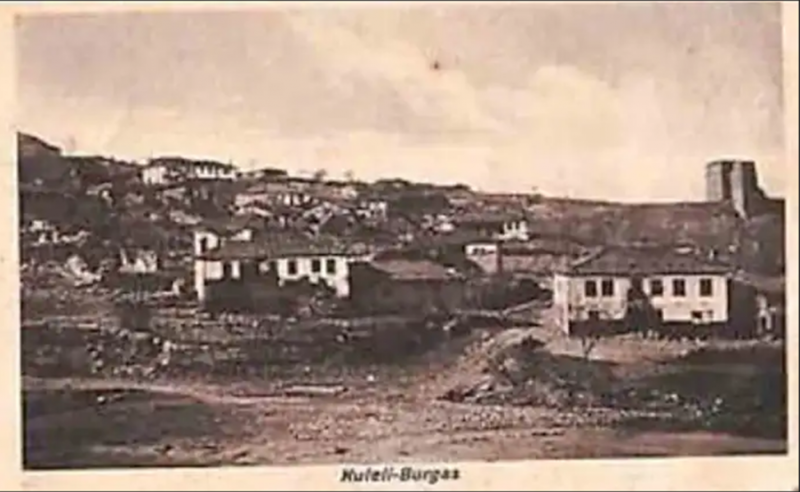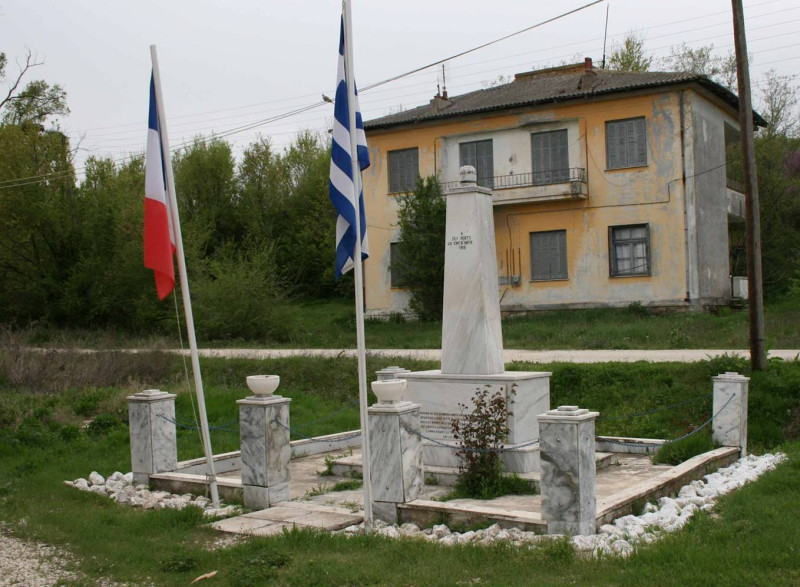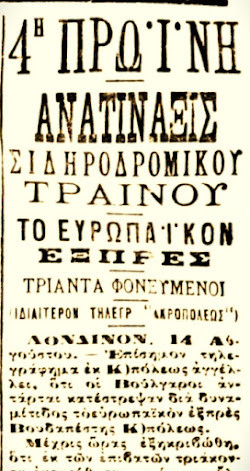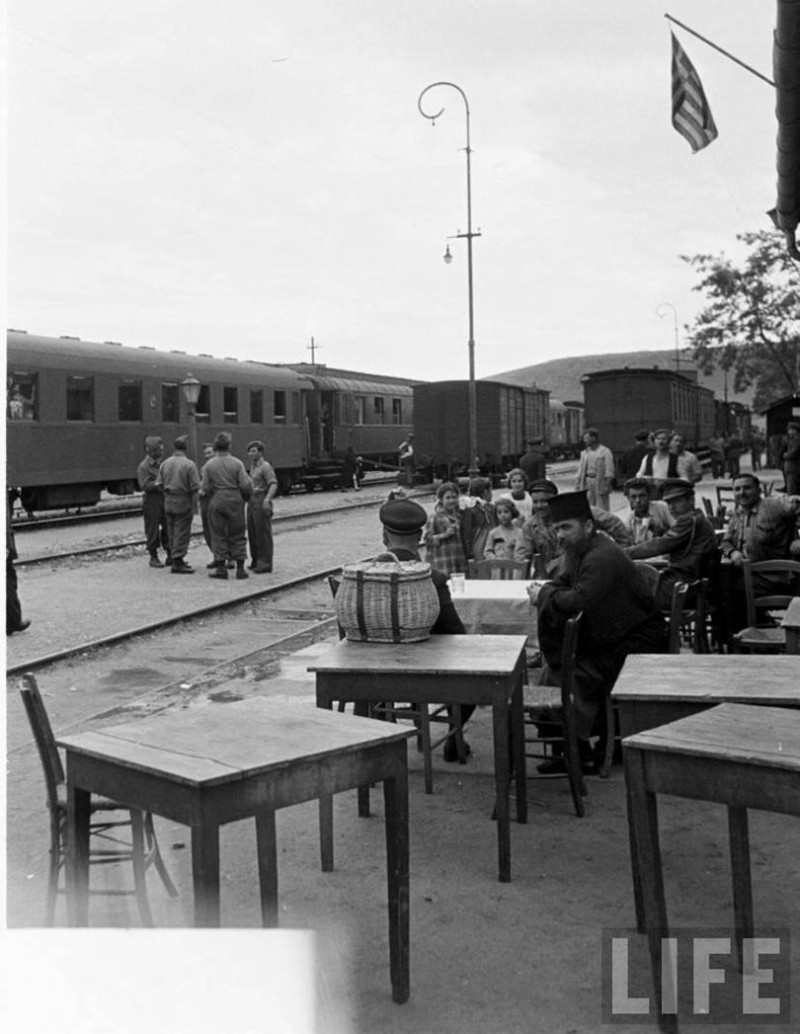The railway station of Pythia for more than a century was one of the most important stations of the Orient Express
The familiar sound on the rails became more and more noticeable. When it was getting stronger, a loud whistle from the stationmaster would calm it down, keeping it quiet for only a few minutes, at the Pythian Railway Station, until the big locomotive took another powerful “breath” to drag on its back the 17 carriages of the legendary Orient Express (Orian Express), which would continue its journey to Istanbul.
“We are now in Europe”, proudly said the few inhabitants of the rural village of Pythia, who “stolen” a drop from the glamor of another life, with the “passage” of Europe’s first ultra-luxurious, transcontinental train, which within three days , traveled approximately 2,740 kilometers from Paris to Constantinople, but also made this short stop at the Pythian railway station, on the edge of the Evros.
“THE Pythia Evros railway station it was a transport hub connecting East and West as it was also the only border railway station on the border between Greece and Turkey. In 1889, the first railway line was put into operation that would directly connect Paris to Istanbul, via Budapest and Belgrade. Pythio was also a station of the Orient Express on this railway line, while two railway bridges had to be built on the Evros”, the Organizing Secretary of the Cultural Association of Didymoteicho “KASTROPOLITES-Knowledge & Action” tells APE-MPE. Yannis Sarsakis.
In a text by the “Castropolitan” Evangelos Sovaras it is mentioned that “between 1870 – 1873 the largest part of the large railway network of the ORIENT EXPRESS was built, which connected Vienna with Constantinople. As part of this project, two railway bridges were also built north of Evros: one in the area of the village of Marasia and one east of the village of Pythio, near the Railway Station of the same name. This railway bridge had a total length of 154 meters (of which half belonged to Greece and half to Turkey). It is located near the Railway Station of the same name, which was an important hub for the ORIENT EXPRESS line, as it connected Pythia with Constantinople, Vienna and later with Thessaloniki. The bridges were officially put into operation in 1874 and for almost a century they were used extensively for the movement of people and goods, to and from central Europe”, states Mr. Sovaras in his report.
For more than a century, the Pythian railway station was one of the most important stations of the Orient Express, as well as many other trains that passed through it every day, with a large number of passengers moving between Istanbul and central Europe. It had a customs house, a police station, inns and accommodation for passengers. However, the well-known Pythian railway station did not leave Bulgarian nationalists indifferent at the beginning of the 20th century. Thus, on August 14, 1903, they “hurt” the operation of the railway network in the region, with bombing action against the Orient Express train.
As the journalist-historical researcher reports to APE-MBE, Pantelis Athanasiadis“on August 14, 1903, Bulgarian rebels blew up two wagons of Orient Expresswhich were at the Pythion station. The result of the attack was 6 dead and 16 injured. “An urgent telegram that arrived from Adrianople to the Ministry of Foreign Affairs in Athens, on the evening of August 14, 1903, mobilized everyone. Consul Nikolaou telegraphed: “A rapide train from Europe arriving via Konin at Kouleli Bourgas station (as today’s Pythia was called during the Ottoman rule), was blown up by Bulgarians on board the train in Bulgaria. Some were killed and some injured. Five guilty parties were arrested.” A second telegram followed: “Following today’s telegram to each of you: Two wagons were broken, 16 were injured and 6 were killed by the Greek Dimitrios Charalambakos from Uzun Kioprou. All other Ottomans…”, recounts Mr. Athanasiadis.
The most luxurious train, especially loved by world-renowned writers and poets, with amenities that only elite, very wealthy travelers could afford, continued its transcontinental journeys, passing through the Pythian station, after the restoration of the railway lines at Pythian and the end of the 1st World War.
In 1919, a Memorial to the Fallen of the French Army (45th Infantry Regiment) was placed in the forecourt of the railway station, which was installed in the period 1919-1920, in the context of the occupation of the area by the forces of the Inter-Allied Command of Thrace.
After World War I, the train could pass through the Semblon Tunnel, hence the name Semblon Orient Express. It even began to run on electricity instead of steam, so it went much faster.
“After the 1923 Treaty of Lausanne, the Orient Express passed through the Pythia – Svilengrad section without any stops, except for the Pythia station,” the author, Eleftherios Tsintarakis, points out to APE-MPE.
“The Orient Express, however, remained so expensive that few could use it. But the inhabitants of Pythia lived moments through its glory, while everyone also used it like a clock, as it was not even a minute late from its destination. “Five went. The Orient has arrived…let’s go home,” the farmers and workers of the area said when he heard it,” Mr. Athanasiadis tells APE-MPE, pointing out how punctual the arrival of the train was at the station.
The Pythion station remained in full operation until 1950, while the Orient Express is historically recorded as stopping at Pythion, for a few minutes, until 1962.
Over the years, the Pythian railway station, despite its geostrategic and historical importance, as well as its unique style, was abandoned, while today the railway line occasionally serves commercial purposes, between the two countries of Greece and Turkey.
Carriages of the original Orient Express found abandoned in Belgium. In the 1970s, the American James Sherwoodfounder of Belmond, at an auction in Monaco bought two dilapidated carriages. By 1982 he had located another 17 carriages, which he rebuilt, giving them the luxury of the first Orient Express of 1883.
Today’s famous five-star train Venice Simplon Orient Expresstoday runs the route from London to Venice, takes 24 hours and costs €4,993 per person.
Nevertheless, it is noteworthy that two carriages of the original Orient Express, a sleeping carriage and the restaurant, are housed as exhibits in the Railway Museum of Thessaloniki.
Source: Skai
I have worked as a journalist for over 10 years, and my work has been featured on many different news websites. I am also an author, and my work has been published in several books. I specialize in opinion writing, and I often write about current events and controversial topics. I am a very well-rounded writer, and I have a lot of experience in different areas of journalism. I am a very hard worker, and I am always willing to put in the extra effort to get the job done.














